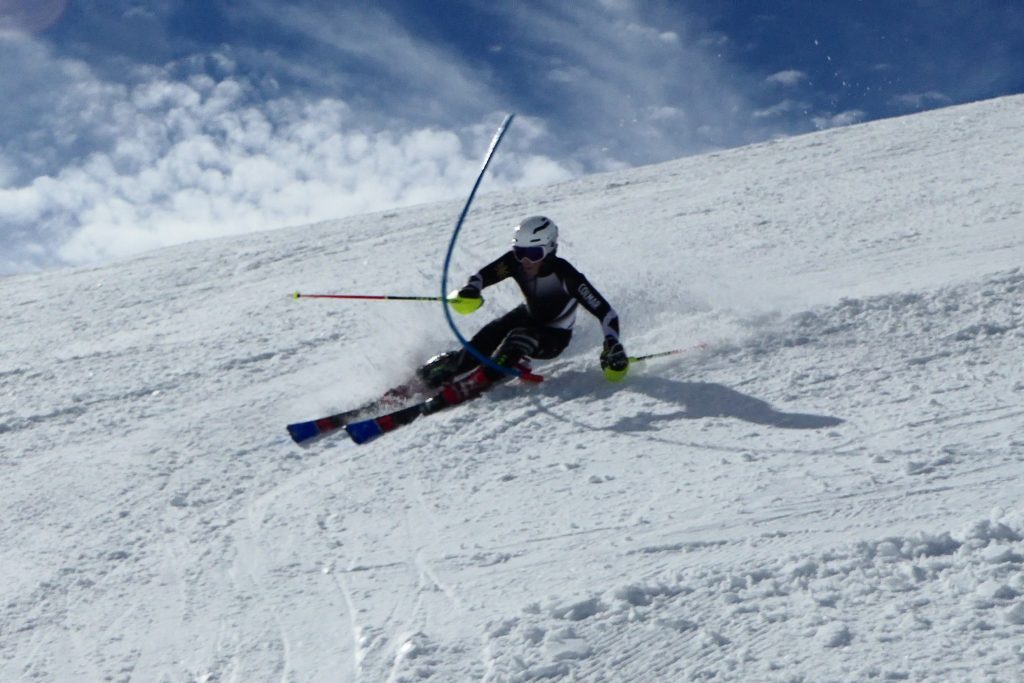Rhythm – Turn Exit Dynamics
During a turn it’s necessary to continue to force the centre of mass towards the centre of the turn with increasing force, until the decision is made to exit the turn.
Yesterday we worked on the dynamics of initiating a turn and today on exiting a turn. Skiing is essentially rhythmical – with the forces built up during a turn being used to complete the turn lifting the skier out and over the top of the downhill ski. (There are alternative outcomes but this is the fundamental principle)
Turn initiation is relatively easy because gravity assists the dynamics. Thrusting from the uphill leg adds an impulse to the movement of the centre of mass. Once the turn has started the ski drives the centre of mass inward – but also upward. Forces increase and it’s necessary to proactively work to keep the centre of mass moving downward and inward. The turn completion sees even greater forces due to now having to resist gravity as well as dealing with the accumulated acceleration – however experience determines the moment when all this force can be channelled into letting the ski lift the skier up and hence out of the turn.
Pivot
We had an introduction to pivoting from the uphill edges. The key thing to appreciate with this subject it that the skis move inwards toward the turn centre – nothing is displaced outward. Here is a link to a detailed account of the “pivoting” process. This is a braking turn with the skis always on an uphill set of edges.
Pole Plant
The use of a pole plant is exclusively for pivoting skiing – where the skis are nearly always on their uphill edges. The pole is used to control and support the centre of mass while the ski swings (side slips) inward along with the centre of mass. Trevor did this well on his left leg when assisted in a pivot – but when on the right leg there was a reluctance to allow the centre of mass to move inward to the left. (This probably being the underlying reason whey right handed people often ski better on their left leg)
When the skis are travelling forward (therefore in dynamic skiing) the centre of mass is supported by the ski’s lifting power (like a bicycle) so the pole must never be stabbed into the ground. In place of this we have a “pole touch” which will be covered tomorrow.
Angulation
We touched briefly on angulation today. This is necessary to prevent excessive hip rotation when learning to pivot- so it’s a good time to learn how to do it properly. Trevor was shown how to arrange the pelvis to trigger a protective reflex contraction of the lower abdomen when under load (turn completion). Just like the pivot – it’s a subject we will have to revisit to nudge along appropriately. The correct mechanics was worked out from understandings gleaned from “chirunning” technique and there is a link to a crude account of this in “Chiskiing”. Below is a photograph of my race training student, Alex, with a clear degree of hip angulation. Dynamics requires both inclination and angulation when turns are relatively short as in special slalom.


